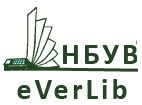СПАДКОВІ ТА НАБУТІ ОЗНАКИ В ПРОЦЕСІ СПОРТИВНОГО ВІДБОРУ
DOI:
https://doi.org/10.28925/2664-2069.2019.1.9Ключові слова:
відбір, задатки, схильність, критерії, генетично детерміновані показники, набуті ознаки.Анотація
Сучасним завданням в спорті є досягнення найвищих результатів на основі поєднання природних задатків спортсменів із сучасними методами їх розвитку.
Мета – дослідити особливості спадкових та набутих ознак для визначення спортивних здатностей і схильності та їх використання в процесі спортивного відбору.
Методи. аналіз літератури та мережі «Інтернет», нормативних документів, практичного досвіду, узагальнення, систематизація.
Результати. Прогнозувати спортивні здібності можна тільки в окремому виді або групі видів спорту, виходячи із загальних положень, характерних для системи відбору. Використання комплексної методики виявлення схильності дозволяє здійснити відбір дітей для занять спортом. Показниками, від яких залежать спортивні досягнення і які можуть слугувати як критерії під час визначення спортивної придатності є стан здоров’я, фізичні і координаційні здатності, конституція тіла, психічний склад особистості, генотип, функціональні можливості, мотивація.
Висновки. Для відбору особливе значення набувають фактори, що детермінують успішність спортивної діяльності, які найбільше обмежені спадковістю.
Посилання
Akhmetov II. Molecular genetics of sports. Moscow: Sov. Sport. 2009; 268 p.
Ahmetov II. Sport genomics: current state of knowledge and future directions. Cellular and Molecular Exercise Physiology. 2012; 1: 1-24.
Australian Institute of Sport. The AIS has developed the Foundations, Talent, Elite and Mastery framework to capture different sporting pathways. (Internet). 2019. Available from: www.sportaus.gov.au/ais/ftem/talent .
Bouchard C. Genetic Determinants of Endurance Performance. Endurance in Sport. Oxford: Blackwell Sci. Publ; 1992. 149-159
Dikkhut GG. Genetics and the limits of human capabilities. Nauka v olimp. sporte. 2004; 2: 56-64.
Eynon N., Ruiz J.R., Oliveira J. et al. (2011). Genes and elite athletes: A roadmap for future research . J. Physiol. 2011; 589(13): 3063–3070.
Gaisl G. Genetisce Komponent des Sporttalents. Leistungssport. 1980; 10(2): 32-36.
Il'in VN, Drozdovskaya SB. Problems and prospects for the development of molecular genetics of physical activity. Sport. Meditsina. 2007: 10-19.
Il'in YP. Psychology of Individual Differences. SPb.: Piter; 2004. 701 p.
Mac Dougall J. Testing of athlete. Champain, Illinois: Нuman Kinetic Books; 1992. 248 p.
Puthucheary Z, Skipworth JRA, Rawal J. et al. (2011). Genetic Influences in Sport and Physical Performance. Sports medicine. 2011; 41(10): 845–859.
Saltin B, Strange S. Maximal oxygen uptake: ≪old≫ and ≪new≫ arguments for a cardiovascular limitation. Med. Sci. Sports Exer. 1992; 24: 30-37.
Sergiyenko LP. Fundamentals of sports genetics. K.: Vishcha shk; 2004. 632 p.
Sologub YB, Taymazov VA. (2000). Sport genetics. M.: Terra Sport; 2000. 127 p.
Shynkaruk O, Ulan A. (2018). Functional asymmetry of the men and the women in sport (using fencing as an example). Sportivnaya meditsina i fizicheskaya reabilitatsiya. 2018; 1: 15-23.
Shynkaruk OA. Selection of athletes and the orientation of their training in the process of many years of improvement (on the material of Olympic sports). K.: Olimp. l-ra; 2011. 360 p.
Shynkaruk O. Generalization of the experience of organizing selection in the Olympic sport. Teoríya í metodika fízichnogo vikhovannya í sportu. 2001; 2-3: 35-9.
Shynkaruk OA. Justification of the use of physiological indicators as criteria for the selection of athletes in cyclic sports. Aktualʹni problemy fizychnoyi kulʹtury i sportu. 2004; 3: 52-5.
Shynkaruk O. The concept of forming a system of training, selection of athletes and their orientation in the process of many years of improvement. Pedagogíka, psikhologíya ta mediko-bíologíchní problemi fízichnogo vikhovannya í sportu. 2012; 12: 144-8.
Shynkaruk O, Imas E, Denysova L, Kostykevich V. Influence of Information and Communication Technologies on Physical and Mental Human Health. Physical Education, Sports and Health Culture in Modern Society. 2018; 2(42): 13-24.
Thoden JS. Testing aerobic power. Physiological Testing of the High-Performance Athlete. Human Kinetics; 1991. 107-173.
Tittel K, Wutscherk H. Anatomical and Anthropometric Fundamentals of Endurance. Endurance in Sport. Oxford: Blackwell Sci. Publ; 1992. 35-45.
Wilmore JH, Costill DL. Physiology of Sport and Exercise. Champain, Illinois: Human Kinetics; 2004. 726 p.











